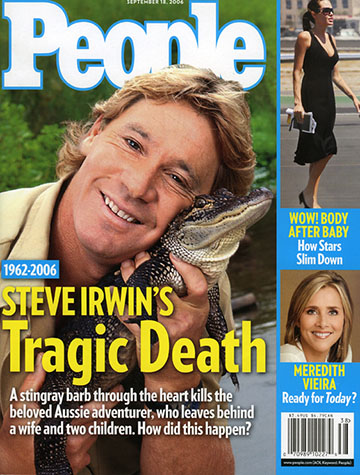
| 
| 
| 
| 
|
| Created by Sloane Sander |
| Contact information: Sloane Sander |
| Produced on March 4th 2014 |

| 
| 
| 
| 
|
People Magazine is recognized by many today as the most popular magazine in America. Richard
Durrell Founded the magazine in 1974 and it has increased its success every year. It features
mostly the lives and gossip of celebrities and recognized people in society. It works to create
different types of subjects, those being, people that are interested in the magazine and the
readers of the magazine. The cover is what captures people's attention and allows for an initial
reaction. The stories and pictures presented on the front create the ideas and situations we are supposed to
value as a society. We as readers are supposed to agree with what is shown to us. Rose defines
discourse as, "a particular knowledge about the world which shapes how the world is understood
and how things are done in it" (Rose 190). People Magazine covers work to show us how we should
look at the world, how we should act and look. It gives us ideas of what is normal and what is
not in society today.
Rose says, "discourse analysis can also be used to explore how images construct specific
views of the social world, in which case, to paraphrase Tonkiss, visuality is viewed as the
topic of research, and the discourse analyst is interested in how images construct accounts
of the social world" (195). This analysis is going to be looking in detail at 6 or 7 (undecided)
magazine covers to find the key themes and truth claims the producers portray to the millions of
viewers who read the magazine. It is also not only important to look at what is visible, but also
pay attention to what is absent. I am going to be looking at magazine covers from throughout
the last 5 years. The key themes that are portrayed throughout these covers are the ideas of
family, romance, eating disorders and how these components have either created happiness or
destroyed a life/lives. The truth claims that are made are the ideas of happiness being the
same for every person. Also, it lays out what is thought to be socially acceptable, and a
"normal" way to live life. There are truth claims made about the eating disorders, and how
those should be handled and how people should look after getting rehabilitated and are healthy
again. There are claims about weight that go along with eating disorders, that play into the
idea that healthy looks the same, or should look the same for every person. Each of these key
themes and truth claims are seen throughout these covers. Each magazine has a certain focus but
when put together there is an intertexuality between all these magazines.
Work Cited:
Rose, Gillian. Visual Methodologies: An Introduction to the Interpretation of Visual Materials. London: Sage, 2001. Print.
Lutz, Cathering, & Collins, Jane, "The Photograph as an Intersection of Gazes: The Example of National Geographic," in Liz Wells (ed.), The Photography Reader (London: Routledge, 2003), pp. 354-374.
People Magazine, n.d. Web. 02 May 2014. http://frontporchfarmstn.com/fpf/wp-content/uploads/2011/06/cover-People.png.
People Magazine, n.d. Web. 02 May 2014. http://bobjonbobjon.files.wordpress.com/2011/05/catherine-zeta-jones-people-magazine-cover-1304785014.jpg
People Magazine, n.d. Web. 02 May 2014. http://2.bp.blogspot.com/-hdA05niFMSs/T560DA30aUI/AAAAAAAAB_o/BSgusPd7uyg/s1600/People+Apr+16+2012+Cover.jpg
People Magazine, n.d. Web. 02 May 2014. http://www.twooldhippies.com/wp-content/uploads/2013/11/People-Cover.jpg
People Magazine, n.d. Web. 02 May 2014. http://img2.timeinc.net/people/i/2013/news/130916/katie-couric-cover-768.jpg
People Magazine, n.d. Web. 02 May 2014. http://www.kieselstein-cord.com/People%20magazine%20cover%209-18-06_72dpi.jpg
People Magazine, n.d. Web. 02 May 2014. http://cdn10.mixrmedia.com/wp-uploads/ningin/blog/2009/04/people-magazine-cover.pgn
a class taught by Bob Bednar in the Communication Studies Department at Southwestern University